Last updated on March 22, 2024

Chained to the Rocks | Illustration by Aaron Miller
There's always room for more mana when playing Commander… except when you need to add any other spell or permanent. Space is at a premium in most decks, and it’s important to make crucial choices on what to include and what to cut.
Of course, this includes land. The generation of mana is important to being able to cast most spells, and there are a number of lands that benefit most decks with secondary abilities or effects (at least partially).
Ramp has become a necessity for any deck regardless of its intended goal or wincons, especially when trying to be at least a little competitive. The faster you can get your cards out there the better chance you can catch your opponents unprepared before they stabilize.
The issue with cards like mana rocks is a) how much are you willing to pay for it (i.e., mana value), and b) it takes up a slot that other cards can’t, so it goes back to the whole land issue. While there isn't a hard and fast rule for how much is too much, there are some different thoughts and methods you can use to get to the heart of the problem.
Let’s take a look!
How Many Mana Rocks Are in a Typical EDH Deck?

Commander's Sphere (Warhammer 40k) | Illustration by David Sondered
The best answer on how many mana rocks to put in your EDH deck is that it depends. That’s not what I'd call a definitive answer, but it does a good job of summing up a very contested and debated issue.
Just as there's no right or wrong way to build a deck (realistically anyway), there's also no hard-and-fast rule as to how much to go for. To add another wrinkle, it depends on the deck’s mana curve and the cost of your commander.
The best I can give are these baselines:
- For casual, low- to mid-power play: five to seven rocks or other mana acceleration (i.e., other forms of ramp like land fetch spells/lands).
- For competitive, mid- to high-power play (or mana-hungry casual decks): 12+ rocks and other mana acceleration. The mana rocks in this case are ones in the 0- to 2-mana value category.
These are cards on top of your already existing land base that'll also fluctuate based on the theme and commander you’re running. For example, a standard Simic () commander like Tatyova, Steward of Tides will run less since more spell-based ramp will be used (hopefully with a way to play lands from your graveyard), while expensive commanders like Tiamat are going to want more to allow you cast them more often.
I'd also allow for some fluctuation in the number of rocks based on the number of colors that you’re running so that you can incorporate mana fixing.
How Many Lands vs. Mana Rocks Should You Have?
This section is my opinion and isn’t the end-all-be-all thought on the matter. There are several schools of thought on how this all works. Mine is based on experience.
I’ve seen others based on simulations and raw math, or pure conjecture. Please use any of these guides as a foundation for your deckbuilding methods, not as any set rule that you may or may not be breaking.
Mana Generation and You
When thinking about mana generation you shouldn’t think about any type as superior or inferior. Each has their pros, cons, and purposes. But if you assign all methods of mana generation the same weight you'll find yourself running into being mana screwed.
I don't have a specific ratio of lands to mana rocks or lands to ramp spells to this end. Instead I think of the whole picture and make sure I'm giving myself enough generators to make the deck functional.
For any given deck I start with a foundation of 40 to 45 sources of mana generation. Where exactly a deck falls depends on the mana curve. If I’m running a lot of 1- to 3-drops then I'd expect less land, while if I’m expecting a lot of 4- to 6-drops up or X spells then I'd expect to have more.
From there I assign weights to the different card types and how they factor in as a source, defined as a unit of mana generation. They're weighted differently because, for most non-land mana generators, they cost mana to be cast and you may not be able to benefit from them until a later turn.
If you want to think of this in simpler terms you can use lands as your baseline (e.g., the deck will start with 42 lands) and then remove/replace those as other mana generators are added. If you thought of going 99 lands with Child of Alara as your commander, that's actually feasible, but I sense you're looking for more. If you follow SaffronOlive this list of weights will be somewhat similar:
- Lands for 1 mana = 1
- Lands for more than 1 mana = 1.5
- Mana rocks = 0.5
- Land fetch spells = 0.5
- Cost reduction spells = 0.5
- Mana doublers = 0.5
- Mana dorks = 0.5
From there I work backward. For example:
The deck needs 42 sources based on the mana curve in two colors. Let’s say I decide on five mana rocks, three cost reducers, and two mana dorks (one for each of my colors). This means I so far have:
- Mana rocks = 0.5 x 5 = 2.5
- Cost reducers = 0.5 x 3 = 1.5
- Mana dorks = 0.5 x 2 = 1
2.5 +1.5+ 1 = 5, and 42 – 5 = 38, so I need 38 mana sources from land.
For a real-life example, here's a deck I built. I pretty much watched The Commander’s Quarters episode of Jared Carthalion cascade and said, “screw their budget,” but I digress. I have 31 total lands in this deck, one of which produces two mana (31.5 sources), 11 mana rocks (5.5 sources), one mana doubler (0.5 sources), and one cost reducer (0.5 sources). This adds up to 38 sources in total.
Because Jared is and the mana curve looks more like a sales chart than a bell curve I'd typically suggest more. But the theme in this deck’s case means that I won't be paying many of the casting costs for my spells.
Exceptions to the “Rule”
Although I just gave the method I follow above, it all goes out the window if you’re playing mono-green, green-based 2-color, or stompy.
Green is inherently an expensive color and you’ll need more mana and ramp to make sure that you have the mana necessary to get those big creatures out as quickly as possible. Don’t be surprised if you use the above method and still find that you need to not count the ramp spells in the equation but as extra cards in the 99 instead.
Fast vs. Slow Ramp
While ramp should always be considered when building a deck, not all ramp is created equal. There comes a certain trade off when you’re casting a spell for hopefully future gain. If you’re spending one or two mana now for two mana that can be used immediately or even in the following turn, that’s generally seen as a good investment.
Even a 2-drop that provides two mana or some mana fixing (e.g., any of the Signets) is a good thing. It’s when you get more expensive that things start to get problematic, especially for mana-hungry commanders and decks.
Cards like Sol Ring that come in for one mana and tap for two immediately are ideal. The same can be said for even one-time mana sources like Jeweled Lotus and Lotus Petal that come in for free and can grant mana immediately. They’re doubly so if you have a way to recur them. But more expensive cards like the Borderposts may not be.
For anything in the 3+ mana group I ask myself, “would I be upset if I drew this turn 3? Turn 5? Turn 7?” If the answer is yes to turn 3 or 5, I probably shouldn’t include the card. If only turn 7 is yes, it’s a maybe. And if none is yes then the ability has to be worth it to include the card.
At the 3+ range it starts to feel like the mana it generates isn’t worth the price. That’s usually because it’s coming in too late or I’m playing it for another reason (e.g., it’s a part of a combo).
Some exceptions:
- Commander's Sphere rides that gray area where it's either an auto-include or a card you won’t even consider. At best it’s three mana for some colored mana and card draw. At worst it’s three mana for a card, or it comes in too late to matter much. I tend to run it, but I also don’t feel bad if I remove it after playing the deck for a bit.
- If you're running four or five colors then you’ll need more mana fixing than you think, including some of the more expensive ones like Timeless Lotus, Firemind Vessel, and Prismatic Geoscope.
How Many Mana Rocks is Too Many?
If you’re playing a non-green, non-artifact based, non-mana hungry deck then I wouldn’t suggest including more than five to seven rocks. This allows for the Commander staples and a couple color-pairing specific options. Anything over that is better as land fetch spells, cost reducers, or mana support spells like Doubling Cube and Explorer's Scope.
If you’re playing green I'd expect anywhere from seven to nine rocks to account for the extra mana requirements. A fair bit of these will those that let you generate mana of any color or colorless mana.
If you’re playing an artifact-based or mana-hungry deck then I'd run as mana rocks as you can manage while still having the deck still work as expected. Having some of these myself, I've found that the number is different for each one based on how it uses those artifacts (affinity, sacrifice, graveyard shenanigans, etc.) This is especially true for colorless decks since they're more mana hungry and work well with a focus on any mana rocks that are mana neutral or positive.
Mana Rocks vs. Cost Reducers
There's an argument to be made that you don’t really need to run mana rocks if you make all of your mana costs cheaper. I say sure, if that’s your prerogative. Personally I think if you make the costs cheaper and run mana rocks then you have more mana to cast those cheaper spells with. Ultimately I have both mana rocks and cost reducers with the same weight, so you very well could replace one for the other.
I will say that if you’re running a lot of one specific color or color combination, or your deck is using a lot of alternate cost mechanics like cycling, then running a cost reducer focused on those (like Fluctuator) is never a bad idea.
Do Cost Reducers Count as a Mana Rock?
In the purest definition of “mana rock,” no. Mana rocks are artifacts that produce mana.
But in more modern times, many players (including myself) have expanded the definition to include any artifacts that generate mana or affect the costs of mana. This means that cost reducers and cost increasers, like Feroz's Ban and Defense Grid, are also considered mana rocks. That also means that cards like Catalyst Stone, which reduce a cost for you but increase the cost for your opponents, meet that definition twice.
Most Popular Mana Rocks for Commander
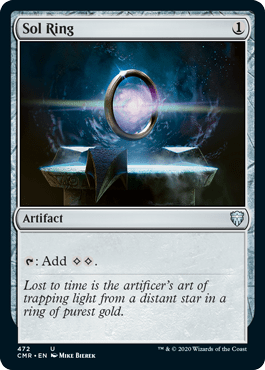
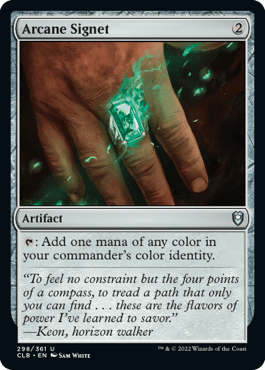
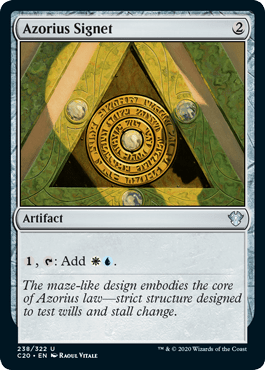

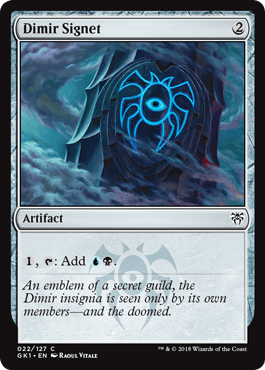
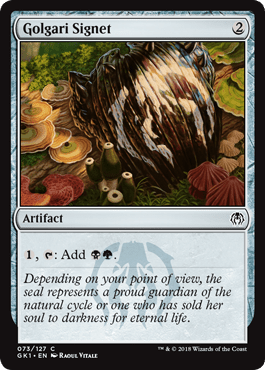

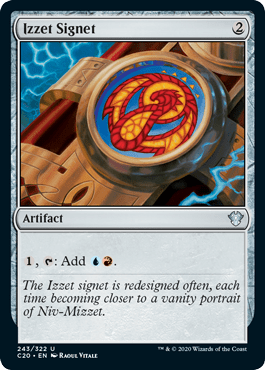
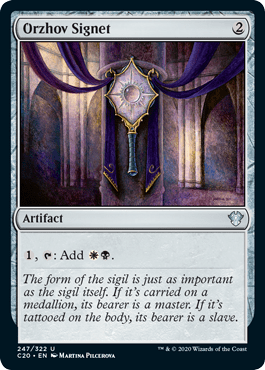
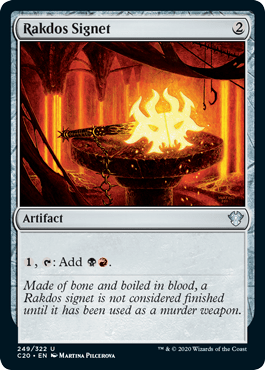

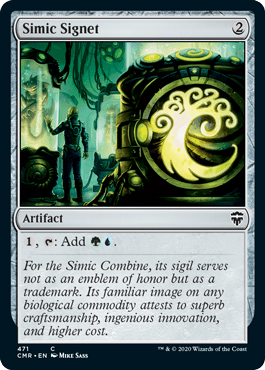
Sol Ring, Arcane Signet, and the Ravnica Signets are the most popular mana rocks by far.
You'd be hard pressed to find any but the most basic decks to contain one, if not all, of these. They’re cheap, both in mana value and IRL money, versatile, and overtly useful. There’s a reason that they tend to be additions to all preconstructed decks that Wizards publishes with each new set.
Controversial Ideas
Pro player Sam Black mentioned in a Twitter thread that he tends to not play decks with ramp and finds mana rocks to be a scam that “hurts more decks than it helps.”
His main point is that it’s really bad if you take a turn playing a mana rock and then miss a land drop, and it can cause you to be the first threat coming out with a fragile mana base when players haven’t had a chance to play their answers. Instead it’s better to run a few more lands. He also found that, unless you're ramping up into some protection, “slow and steady is far safer.”
I won’t be the first to debate the concepts of mana rocks in Commander, nor will I be the last. While there are some inherent advantages to using mana rocks, like that for some you get more out than you put in or that it's an investment toward your deck’s success like playing a creature that grows in size each turn, there are some disadvantages.
Mass land destruction is a big turnoff for most of the player base, so your lands are much safer than artifacts that can be board wiped alongside the wider threat. Having your mana base halved or worse is never ideal. But I tend to find that if I have most of my mana rocks on the battlefield, chances are that I've built up a land base as well by the time they’re wiped.
It may set me back but it'll most likely set my opponents back as well for a few turns. Also all the more reason to play some protection, like Darksteel Forge.
Wrap Up
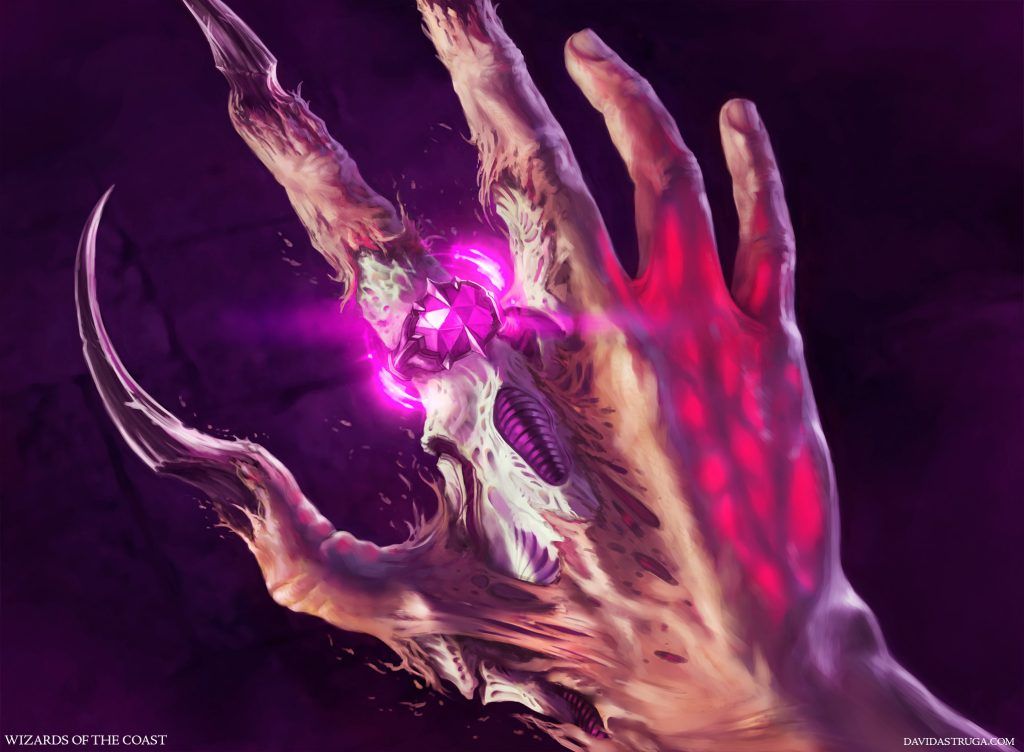
Arcane Signet (Warhammer 40k) | Illustration by David Astruga
Mana rocks have been around since Magic’s inception. While the pieces that many of us play with today are less Power 9 and more “very useful,” they’re something all of us expect to see coming out of every deck on Commander night. They've become the least common denominator in all the decks we build.
While it can be troublesome to decide whether you need that land or if you can remove it to include just one more jank spell, you have come to terms that there are just some mana generators that stay where they are. In a format dictated by quality, mana generation is one of those pieces that remains very much in the realm of efficiency no matter how many of them we run.
What are your thoughts on mana rocks and how many a deck needs? Are you in the camp of more is better, or should lands dominate that slot? Let us know on our Discord, on Twitter, or in the comments below.
That’s all from me for now. Stay safe, stay healthy, and wash your hands!
Follow Draftsim for awesome articles and set updates:
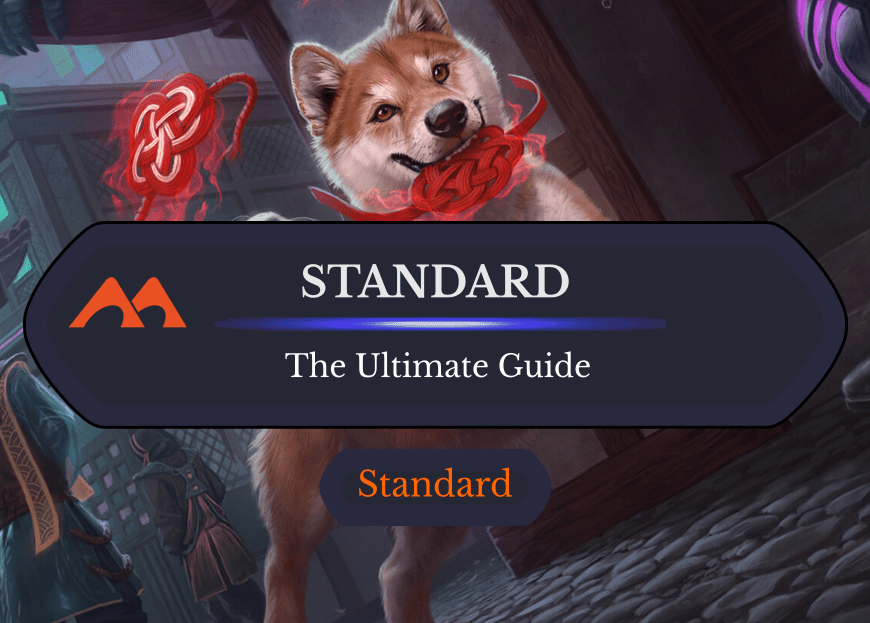

Add Comment